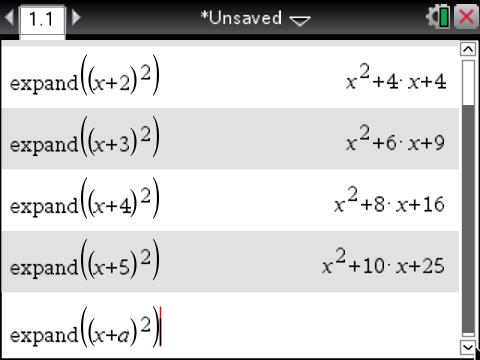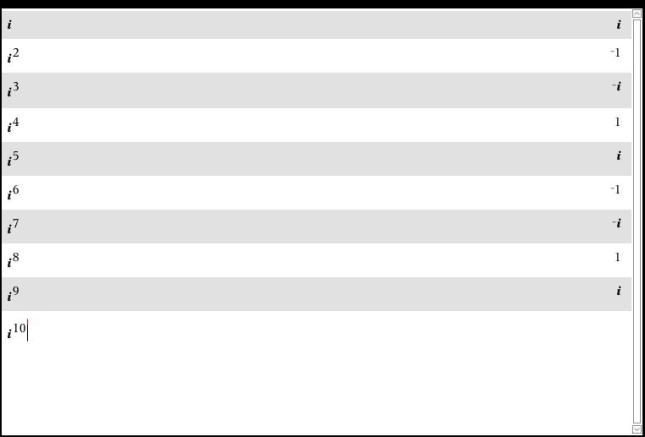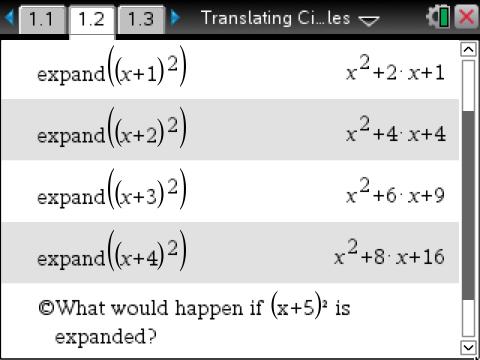We want every learner in our care to be able to say
I can look for and express regularity in repeated reasoning.
But what if I can’t look for and express regularity in repeated reasoning yet? What if I need help? How might we make a pathway for success?
Level 4
I can attend to precision as I construct a viable argument to express regularity in repeated reasoning.
Level 3
I can look for and express regularity in repeated reasoning.
Level 2
I can identify and describe patterns and regularities, and I can begin to develop generalizations.
Level 1
I can notice and note what changes and what stays the same when performing calculations or interacting with geometric figures.
What do you notice? What changes? What stays the same?
We use a CAS (computer algebra system) to help our students practice look for and express regularity in repeated reasoning.
What do we need to factor for the result to be (x-4)(x+4)?
What do we need to factor for the result to be (x-9)(x+9)?
What will the result be if we factor x²-121?
What will the result be if we factor x²-a²?
We can also explore over what set of numbers we are factoring using the syntax we have been using. And what happens if we factor x²+1? (And then connect the result to the graph of y=x²+1.)
What happens if we factor over the set of real numbers?

Or over the set of complex numbers?

What about expanding the square of a binomial?

What changes? What stays the same? What will the result be if we expand (x+5)²?

Or (x+a)²?
Or (x-a)²?

What about expanding the cube of a binomial?
Or expanding (x+1)^n, or (x+y)^n?
What if we are looking at powers of i?
We can look for and express regularity in repeated reasoning when factoring the sum or difference of cubes. Or simplifying radicals. Or solving equations.
Through reflection and conversation, students make connections and begin to generalize results. What opportunities are you giving your students to look for and express regularity in repeated reasoning? What content are you teaching this week that you can #AskDontTell?
[Cross-posted on Experiments in Learning by Doing]



















